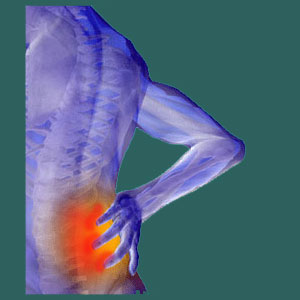
Excruciating sacroiliac pain can quickly disable patients, since most can not ambulate due to their extreme suffering. The sacroiliac joint is an important component in the chain of structures that allow us to stand and walk. When the joint becomes inflamed, dysfunctional or simply painful, some patients will find themselves unable to perform even the most basic physical activities with their bodies.
Statistics show that extreme sacroiliac joint pain is quite rare and certainly is the exception to the rule of mild to moderate expressions of discomfort. While this is great news for the general population, it provides no solace for those patients who are suffering terribly from dramatic symptoms in the SI joint.
This essay explores the occurrence of very severe sacroiliac joint symptoms. We will focus on debilitating expressions that curtain physical activity and how these dire pain syndromes are both caused and cured.
Excruciating Sacroiliac Joint Pain
When SIJ pain is extreme, patients develop activity avoidance strategies out of immediate necessity. Most will not be able to bear weight on the painful joint and therefore will not be able to stand or walk. Performing any physical exertion is usually out of the question.
Although the extreme pain is enough to prevent most patients from pushing their bodies to perform, some patients also demonstrate instability and weakness in the joint that might actually prevent them from standing or walking, even if they can disregard the horror of the pain. In the worst cases, the joint might develop a hypermobility problem that can spell disaster if the person decides to walk on it, despite the pain.
Therefore, most people who are affected by severe symptomology will be confined to bed or a seated posture until the pain either improves, resolves or is cured via some therapeutic intervention. Since the most common forms of conservative care, such as exercises and stretches, can not be performed by these patients, rapid escalation of treatment is commonplace and often results in surgical treatment of the joint.
Sources of Excruciating SIJ Pain
Virtually any type of sacroiliac joint symptoms can become excruciating. Worse still, while some conditions progress slowly, providing plenty of time for treatment to be rendered, other sacroiliac joint pain conditions express themselves acutely and without much warning:
Sacroiliac joint degeneration is rarely the source of any significant symptoms. When pain does become severe, the timeline of progression is usually very slow.
Sacroiliitis can flare-up quickly and create debilitating pain in very rare circumstances.
Autoimmune disease can attack the SI joint, causing very dire symptomology in some patients. Fortunately, most of these very severe pain problems develop over time and are not acute presentations.
Rare, serious sacroiliac injury can instantly debilitate. Traumatic sacroiliac injury resulting in extreme pain is often surgically treated immediately.
Sacroiliac joint hypermobility due to ligamentous dysfunction can progress to disabling degrees. Most expressions slowly evolve and worsen, although acute expressions are possible in select scenarios.
Curing Excruciating Sacroiliac Pain
There are 2 main forms of excruciating sacroiliac pain problems: those which will improve or resolve and those which will not. This is why accurate diagnostic processing is of paramount importance when deciding on the best course of action for an acute presentation of debilitating pain.
Joint pain which might improve can be monitored, while symptomatic care is rendered. Many injuries, sacroiliitis and disease-related symptoms can be managed conservatively until they organically resolve or improve to the extent where the patient can regain physical functionality and participate in rehabilitation exercises.
Some forms of trauma, joint degeneration and extreme dysfunction will scoff at conservative treatment efforts and might require surgical fusion of the SI joint to stabilize it and allow the patient to heal and return to full function.
We know how frightening acute sacroiliac joint pain can be. However, it is vitally important to stay calm and clear-headed. This is the only way a patient can successfully navigate the usual barriers to successful care, such as misdiagnosis, financially-motivated care providers and unnecessary treatment.
Sacroiliac Joint Pain > Sacroiliac Pain > Excruciating Sacroiliac Pain





